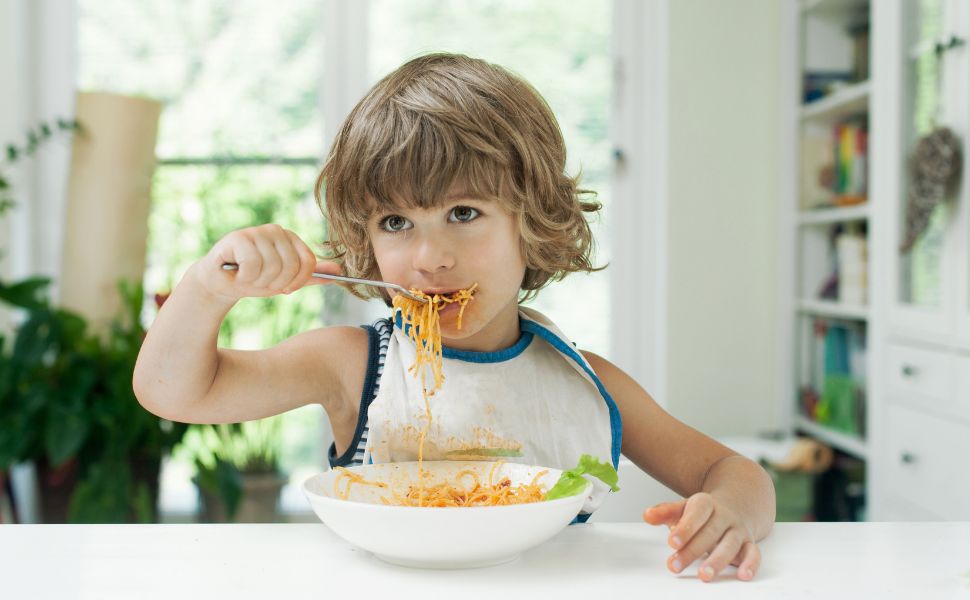Introducing spaghetti for babies is a wonderful way to promote healthy eating habits and provide a range of essential nutrients. With its versatility, nutritional value, and manageable texture, spaghetti offers an exciting culinary adventure for your little one. Remember to prioritize safety, consider your baby’s developmental stage, and enjoy the delightful experience of watching your baby explore the world of spaghetti, one delicious bite at a time.
Introducing solid foods to your baby is an exciting milestone in their development. As a parent, you’re constantly seeking nutritious and tasty options to satisfy your little one’s growing appetite. Look no further than spaghetti—a beloved and versatile dish that can be adapted to suit your baby’s needs. In this article, we’ll explore why spaghetti is an excellent choice for introducing solid foods to your baby and provide tips on how to prepare and serve it in a safe and enjoyable manner.
Table of Contents
- Why Choose Spaghetti for Babies?
- Preparing Spaghetti for babies:
- Homemade spaghetti sauce
- What you need to make Homemade Spaghetti Sauce?
- Instructions to make the best Spaghetti Sauce

Why Choose Spaghetti for Babies?
- Nutritional Value: Spaghetti offers a range of nutrients essential for your baby’s growth and development. It is a good source of carbohydrates, which provide energy, and contains dietary fiber that aids in digestion. Additionally, spaghetti can be paired with various ingredients to provide essential vitamins and minerals, including vegetables, lean proteins, and healthy fats.
- Texture Exploration: Introducing different textures is crucial during the weaning process. Spaghetti allows your baby to experience a new and exciting texture, as it is soft and easy to chew. The unique texture of spaghetti helps develop your little one’s oral motor skills, enhancing their ability to eat a variety of foods as they grow older.
- Versatility: Spaghetti is incredibly versatile, allowing you to customize meals based on your baby’s preferences and nutritional needs. You can create endless combinations by adding pureed vegetables, mild sauces, or small pieces of soft proteins like chicken or tofu. This versatility ensures that your baby receives a wide array of flavors and nutrients while enjoying their mealtime.
Preparing Spaghetti for babies:
- Choosing the Right Pasta: Opt for whole wheat or enriched pasta varieties, as they are higher in fiber and essential nutrients. Avoid using pasta shapes that are too small or difficult to pick up, as this may pose a choking hazard. Cut the spaghetti into shorter strands to make it more manageable for your little one to handle.
- Cooking Techniques: Cook the spaghetti until it is well-cooked but still slightly firm to ensure easy chewing and digestion. Avoid adding salt or seasonings that are not suitable for babies, as their delicate palates may be sensitive to strong flavors.
- Nutritious Additions: Enhance the nutritional value of spaghetti by incorporating pureed vegetables such as carrots, spinach, or zucchini into the sauce. These additions introduce new flavors, textures, and vital vitamins into your baby’s meal. Alternatively, you can prepare a simple tomato-based sauce or use mashed avocado as a healthier alternative to traditional sauces.

Serving Tips:
- Temperature: Always ensure that the spaghetti has cooled down to an appropriate temperature before serving it to your baby. Test a small portion on the inside of your wrist to ensure it is lukewarm, avoiding any potential burns.
- Portion Control: Start with small servings, allowing your baby to gradually adapt to the new food. This approach helps prevent overfeeding and allows you to observe any adverse reactions or allergies.
- Utensils or Finger Foods: Depending on your baby’s development, you can offer spaghetti using a spoon or as finger food. As they progress in their motor skills, encourage self-feeding by providing appropriately sized strands of spaghetti that your baby can grasp.
Homemade spaghetti sauce
The Advantages of Homemade Spaghetti Sauce:
- Quality Control: Making your own spaghetti sauce gives you complete control over the ingredients. You can choose the freshest produce, the finest herbs and spices, and adjust the flavors to suit your taste preferences. By avoiding preservatives and additives commonly found in store-bought sauces, you can create a healthier and more wholesome option for you and your loved ones.
- Customizable Flavors: Homemade spaghetti sauce offers endless possibilities for flavor combinations. You can experiment with different herbs, spices, and ingredients to create a sauce that perfectly complements your palate. Whether you prefer a robust and tangy sauce or a milder, sweeter version, the choice is yours.
- Versatility: A homemade sauce can be tailored to accommodate dietary restrictions and preferences. If you’re following a specific diet, such as vegan, gluten-free, or low-sodium, you have full control over the ingredients, making it easier to adapt the sauce to your specific needs.
What you need to make Homemade Spaghetti Sauce?
- 2 tablespoons olive oil
- 1 medium onion, finely chopped
- 2 garlic cloves, minced
- 1 can (28 ounces) crushed tomatoes
- 1 can (14 ounces) tomato sauce
- 2 tablespoons tomato paste
- 1 teaspoon sugar (optional)
- 1 teaspoon dried basil
- 1 teaspoon dried oregano
- ½ teaspoon salt
- ¼ teaspoon black pepper
- Optional: red pepper flakes for heat
- Fresh basil and grated Parmesan cheese for garnish
Instructions to make the best Spaghetti Sauce
- Heat the olive oil in a large saucepan over medium heat. Add the chopped onion and minced garlic, sautéing until they become soft and fragrant.
- Pour in the crushed tomatoes, tomato sauce, and tomato paste, stirring well to combine. Reduce the heat to low.
- Add the sugar (if desired), dried basil, dried oregano, salt, black pepper, and red pepper flakes (if using). Stir to incorporate the seasonings into the sauce.
- Simmer the sauce on low heat for at least 30 minutes, allowing the flavors to meld together. For a richer taste, you can simmer it for up to 1-2 hours, stirring occasionally.

Note: Spaghetti for babies
- Cook organic whole wheat spaghetti as instructed on the package.
- Add the homemade spaghetti sauce on cooked spaghetti noodles.
- Add Parmesan if required before serving.
Serving and Storage:
- Once the sauce is ready, taste and adjust the seasoning according to your preference.
- Serve the homemade spaghetti sauce over your favorite pasta, garnishing it with fresh basil leaves and grated Parmesan cheese.
- If you have leftover sauce, allow it to cool completely before storing it in an airtight container in the refrigerator. It can be refrigerated for up to 5 days or frozen for up to 3 months.
Other pasta recipes for babies
FAQs – Spaghetti for babies
Can babies eat spaghetti?
Yes, babies can eat spaghetti, but it’s important to introduce it appropriately based on their developmental stage and readiness for solid foods. As a general guideline, most babies are ready to try solid foods, including pureed or mashed versions of spaghetti, around 6 months of age, although individual readiness may vary.
When introducing spaghetti for babies, consider the following:
- Texture: Start with a smooth and pureed version of homemade spaghetti sauce. You can blend cooked spaghetti with a small amount of water or breast milk/formula to achieve a thin consistency that is easy for your baby to swallow. As your baby progresses and becomes more comfortable with eating, you can gradually increase the texture by mashing the spaghetti into smaller pieces or offering well-cooked strands for them to explore.
- Ingredients: Keep the ingredients simple and age-appropriate. Plain cooked spaghetti made from whole wheat or enriched pasta is a good choice. Avoid using sauces that are high in sodium, spices, or other seasonings that may be too strong for your baby’s delicate palate. You can gradually introduce mild, baby-friendly sauces or simply serve the spaghetti plain.
- Allergies and Choking Hazards: Pay attention to potential allergies or choking hazards. If you have concerns about specific ingredients, consult with your pediatrician. Be mindful of the size and texture of the spaghetti pieces, ensuring they are appropriate for your baby’s ability to chew and swallow. Cutting the spaghetti into shorter strands can help minimize the risk of choking.
- Introduction Process: Introduce one new food at a time and observe your baby’s reactions for any signs of allergies or digestive issues. It’s also essential to follow the recommended order of food introduction, starting with iron-rich foods and gradually incorporating different food groups.

Can I give my 7 month old spaghetti?
Yes, you can generally introduce spaghetti to a 7-month-old baby. At around 6 to 8 months of age, babies are usually ready to begin exploring solid foods, and introducing soft, mashed, or pureed versions of spaghetti can be a great option. However, every baby is different, so it’s essential to consider their individual readiness for solid foods and consult with your pediatrician before introducing new foods.
How do you serve spaghetti for baby led weaning?
Serving spaghetti for babies can be an exciting and enjoyable experience for both you and your baby. Here are some tips for serving spaghetti in a baby-led weaning approach:
- Cut into manageable pieces: Start by cooking the spaghetti until it is well-cooked but still firm. Allow it to cool slightly before serving. Cut the spaghetti into shorter strands or bite-sized pieces that are easy for your baby to grasp and hold. This helps them have better control while exploring the food.
- Encourage self-feeding: Baby-led weaning focuses on allowing babies to explore and feed themselves. Place the bite-sized pieces of spaghetti on your baby’s high chair tray or a baby-friendly plate. Encourage your little one to pick up the spaghetti with their hands and bring it to their mouth. This helps develop their fine motor skills and promotes self-feeding independence.
- Provide a suitable sauce or accompaniments: While plain cooked spaghetti can be a great starting point, you can also offer a baby-friendly sauce or other accompaniments to enhance the flavor and nutritional value. Choose mild and age-appropriate sauces or toppings. For example, you can lightly coat the spaghetti in a tomato sauce or offer small pieces of cooked vegetables or soft proteins like finely shredded chicken or tofu.
- Be mindful of choking hazards: Always prioritize your baby’s safety when serving spaghetti. Ensure that the spaghetti pieces are soft, well-cooked, and cut into appropriate sizes to minimize the risk of choking. Supervise your baby closely during mealtime and encourage them to take small, manageable bites.
- Embrace the mess: Baby-led weaning can be messy, especially when it comes to spaghetti. Embrace the mess and provide a bib or a smock to protect your baby’s clothing. Consider placing a plastic sheet or a high chair splat mat under your baby’s chair to make clean-up easier.
Remember, baby-led weaning is about allowing your baby to explore and enjoy a variety of foods at their own pace. It’s important to always supervise your baby during meals and offer a safe and supportive environment for them to learn and develop their self-feeding skills.

